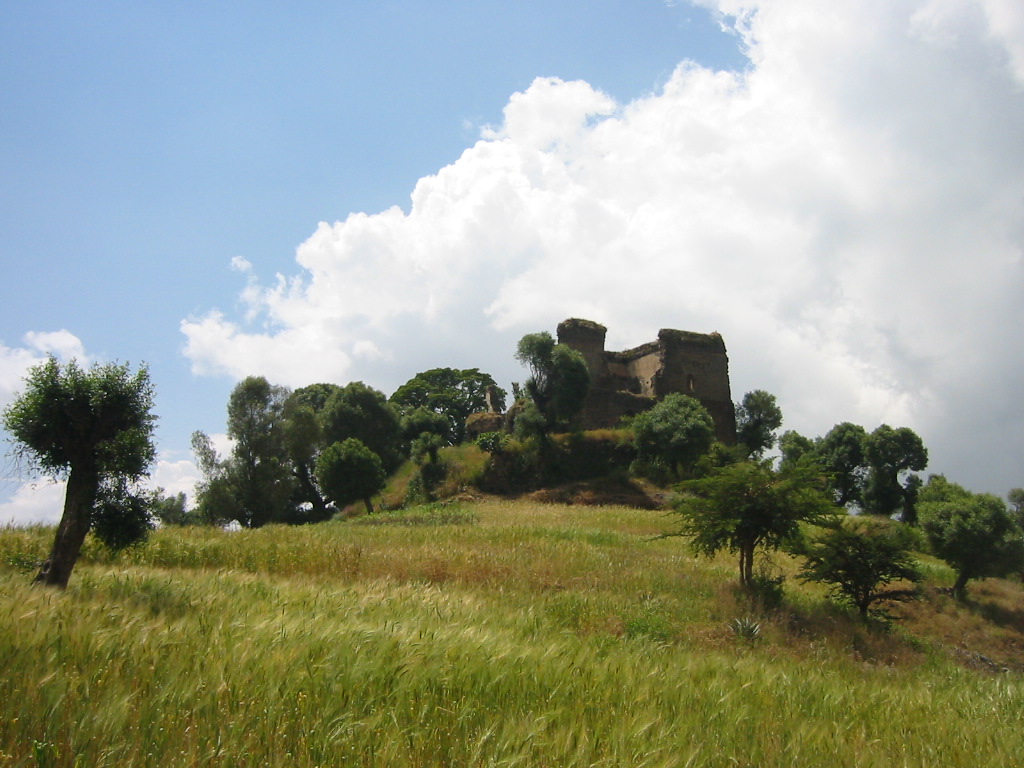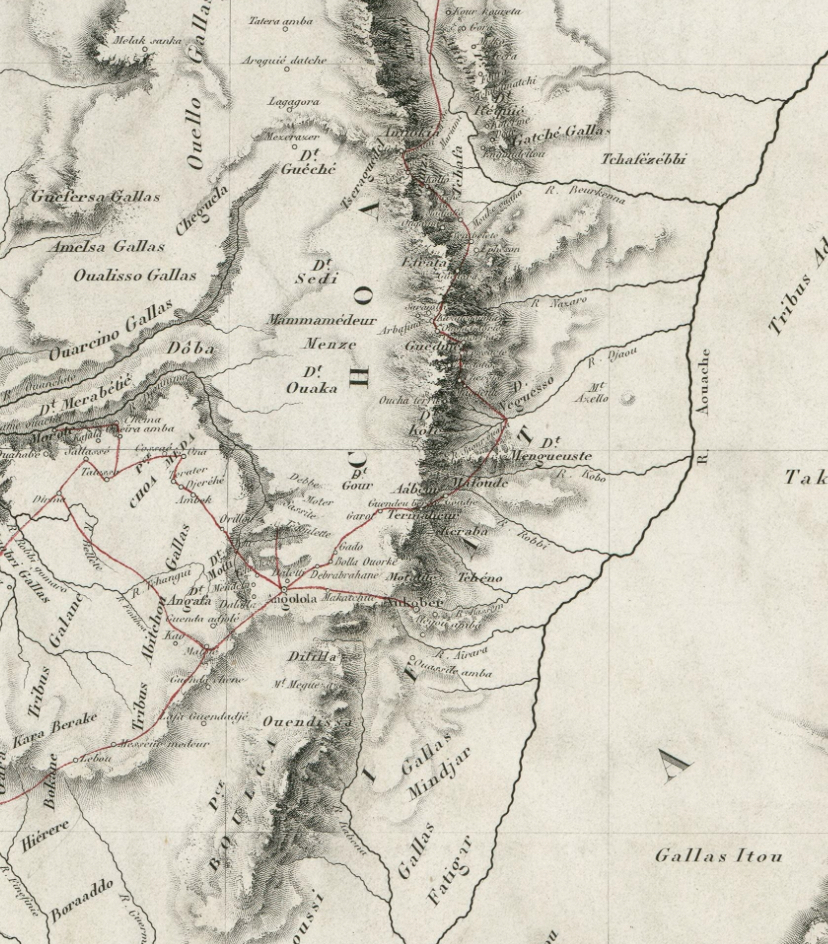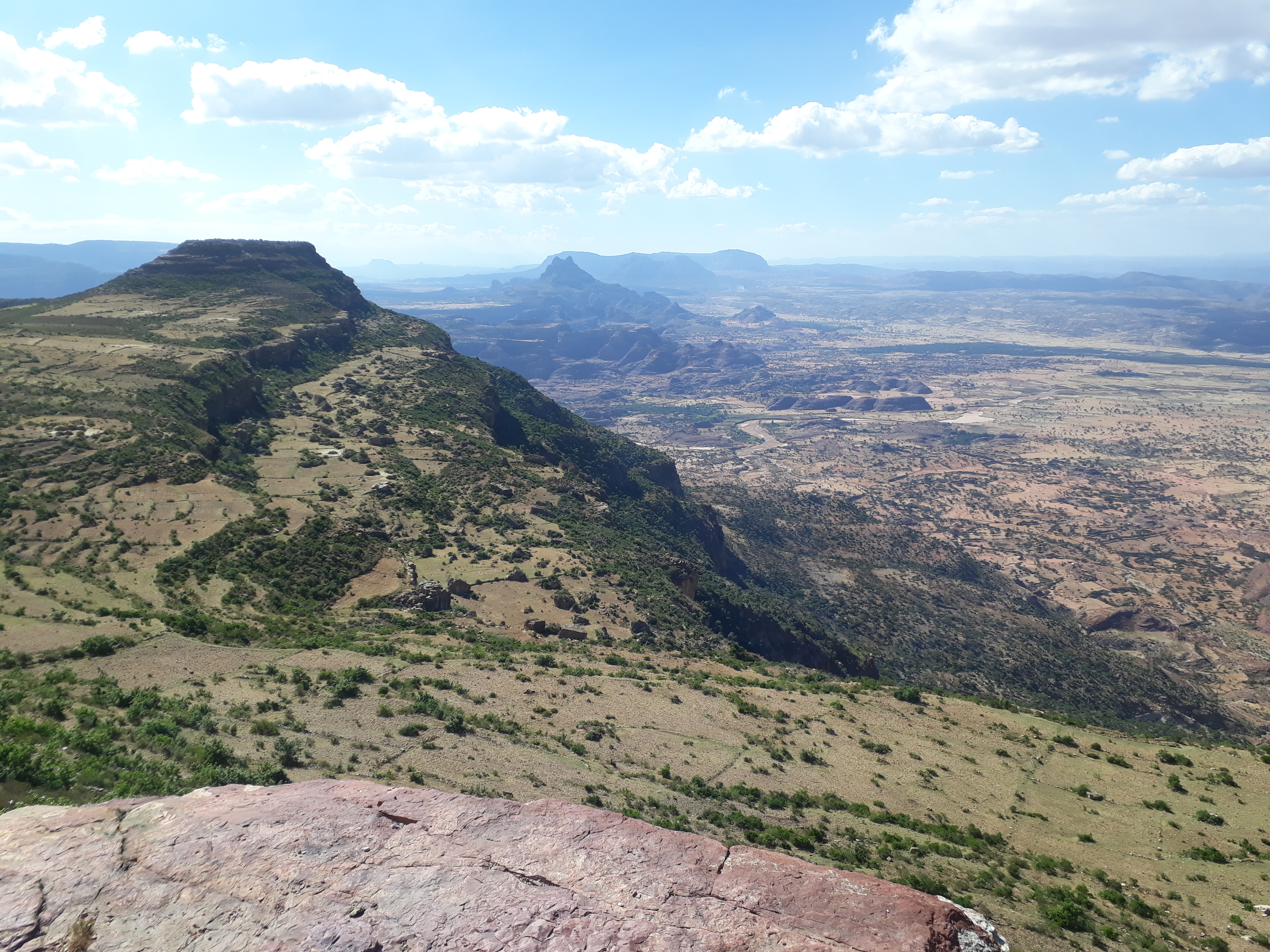|
Yolyos
Yolyos ( Ge'ez: ዮልዮስ ''yōlyōs'', "Julius") was an early 17th-century Ethiopian noble. He was appointed by Emperor Susenyos as governor of various provinces such as Ifat and Shewa, taking the traditional Ifat title of "Walashma." He took part in several attempts to overthrow Susenyos. In 1612 Yolyos and Keflo rebelled against Susenyos. They were tried and found guilty and sentenced to death. However, Susenyos spared their lives. Yolyos was pardoned and released from detention after eight days, after Malakotawit having pleaded with her father for clemency. In 1617 there was a conspiracy to overthrow Emperor Susenyos, organized by his close relatives, his officials and nobility who opposed his religious policy, and those who were dissafected by his wars and the amount of annual military expeditions. According to Pedro Paez, a confidante of Susenyos, the principal leader of the conspiracy was Yolyos. His headquarters in Ifat was on an ''amba Amba or AMBA may refer to: ... [...More Info...] [...Related Items...] OR: [Wikipedia] [Google] [Baidu] |
Susenyos Of Ethiopia
Susenyos I ( ; –1575 – 17 September 1632), also known as Susenyos the Catholic, was Emperor of Ethiopia from 1607 to 1632, and a member of the Solomonic dynasty. His throne names were Seltan Sagad and Malak Sagad III. He was the son of '' Abeto'' Fasil, as well as the grandson of ''Abeto'' Yakob and the great-grandson of Dawit II. As a result, while some authorities list Susenyos as a member of the Solomonic dynasty, others consider him—rather than his son, Fasilides—as the founder of the Gondar line of the dynasty (which is, however, ultimately a subset of the Solomonic dynasty). The life of Susenyos is known through his chronicle, written by several official writers (''sehafe te’ezaz''). The Jesuits, who were closely associated with Susenyos’s reign, also left numerous documents on their mission in Ethiopia. Manuel de Almeida, a Portuguese Jesuit who lived in Ethiopia during Susenyos reign, described the emperor as "tall with the features of a man of quality ... [...More Info...] [...Related Items...] OR: [Wikipedia] [Google] [Baidu] |
Cognate
In historical linguistics, cognates or lexical cognates are sets of words that have been inherited in direct descent from an etymological ancestor in a common parent language. Because language change can have radical effects on both the sound and the meaning of a word, cognates may not be obvious, and it often takes rigorous study of historical sources and the application of the comparative method to establish whether lexemes are cognate. Cognates are distinguished from loanwords, where a word has been borrowed from another language. Name The English term ''cognate'' derives from Latin , meaning "blood relative". Examples An example of cognates from the same Indo-European root are: ''night'' ( English), ''Nacht'' ( German), ''nacht'' ( Dutch, Frisian), ''nag'' (Afrikaans), ''Naach'' ( Colognian), ''natt'' ( Swedish, Norwegian), ''nat'' ( Danish), ''nátt'' ( Faroese), ''nótt'' ( Icelandic), ''noc'' ( Czech, Slovak, Polish), ночь, ''noch'' ( Russian), но� ... [...More Info...] [...Related Items...] OR: [Wikipedia] [Google] [Baidu] |
Ethiopia
Ethiopia, officially the Federal Democratic Republic of Ethiopia, is a landlocked country located in the Horn of Africa region of East Africa. It shares borders with Eritrea to the north, Djibouti to the northeast, Somalia to the east, Kenya to the south, South Sudan to the west, and Sudan to the northwest. Ethiopia covers a land area of . , it has around 128 million inhabitants, making it the List of countries and dependencies by population, thirteenth-most populous country in the world, the List of African countries by population, second-most populous in Africa after Nigeria, and the most populous landlocked country on Earth. The national capital and largest city, Addis Ababa, lies several kilometres west of the East African Rift that splits the country into the African Plate, African and Somali Plate, Somali tectonic plates. Early modern human, Anatomically modern humans emerged from modern-day Ethiopia and set out for the Near East and elsewhere in the Middle Paleolithi ... [...More Info...] [...Related Items...] OR: [Wikipedia] [Google] [Baidu] |
Emperor Of Ethiopia
The emperor of Ethiopia (, "King of Kings"), also known as the Atse (, "emperor"), was the hereditary monarchy, hereditary ruler of the Ethiopian Empire, from at least the 13th century until the abolition of the monarchy in 1975. The emperor was the head of state and head of government, with ultimate executive power, executive, judicial power, judicial and legislative power in that country. A ''National Geographic'' article from 1965 called Imperial Ethiopia "nominally a constitutional monarchy; in fact it was a benevolent dictatorship, benevolent autocracy". Title and style The title "King of Kings", often rendered imprecisely in English as "emperor", dates back to ancient Mesopotamia, but was used in Aksumite Empire, Axum by King Sembrouthes (). However, Yuri Kobishchanov dates this usage to the period following the Persian Empire, Persian victory over the Roman Empire, Romans in 296–297. The most notable pre-Solomonic usage of the title "Negusa Nagast" was by Ezana of Ax ... [...More Info...] [...Related Items...] OR: [Wikipedia] [Google] [Baidu] |
Ifat (historical Region)
Ifat (Harari language, Harari: ኢፋት; ; Somali Language, Somali: Awfat) also known as Yifat, Awfat or Wafat was a historical Muslim region in the Horn of Africa. It was located on the eastern edge of Shewa. Geography According to thirteenth century Arab geographer Ibn Sa'id al-Maghribi, Ifat was alternatively known as ''Jabarta''. In the fourteenth century Ibn Fadlallah al-Umari, Al Umari mentioned seven cities or domains within Ifat: Biqulzar, Adal (historical region), Adal, Shewa, Kwelgora, Shimi, Jamme and Laboo. Ifat designated the Muslim dominated portion of Shewa in Abyssinia according to post seventeenth century Harari language, Harari texts, its territory extended from the Shewan uplands east, towards the Awash River. History During Islam's inception tradition states the Banu Makhzum and Umayyad Caliphate, Umayyad coalitions quarreled in Ifat. According to historian Enrico Cerulli, in thirteenth century Sultan Umar Walasma founded the Ifat Sultanate in Ifat after ... [...More Info...] [...Related Items...] OR: [Wikipedia] [Google] [Baidu] |
Shewa
Shewa (; ; Somali: Shawa; , ), formerly romanized as Shua, Shoa, Showa, Shuwa, is a historical region of Ethiopia which was formerly an autonomous kingdom within the Ethiopian Empire. The modern Ethiopian capital Addis Ababa is located at its center. The towns of Debre Berhan, Antsokia, Ankober, Entoto and, after Shewa became a province of Ethiopia, Addis Ababa have all served as the capital of Shewa at various times. Most of northern Shewa, made up of the districts of Menz, Tegulet, Yifat, Menjar and Bulga, is populated by Christian Amharas, while southern Shewa is inhabited by the Gurages and eastern Shewa has large Oromo and Argobba Muslim populations. The monastery of Debre Libanos, founded by Saint Tekle Haymanot, is located in the district of Selale, Oromia Modern Shewa includes the historical Endagabatan province. History Shewa first appears in the historical record as part of a Muslim state ( Makhzumi dynasty), which G. W. B. Huntingford believed was fo ... [...More Info...] [...Related Items...] OR: [Wikipedia] [Google] [Baidu] |
Pedro Paez
Pedro is a masculine given name. Pedro is the Spanish, Portuguese, and Galician name for ''Peter''. Its French equivalent is Pierre while its English and Germanic form is Peter. The counterpart patronymic surname of the name Pedro, meaning "son of Peter" (compared with the English surname Peterson) is Pérez in Spanish, Peres in Galician and Portuguese, Pires also in Portuguese, and Peiris in coastal area of Sri Lanka (where it originated from the Portuguese version), with all ultimately meaning "son of Pero". The name Pedro is derived via the Latin word "petra", from the Greek word "η πέτρα" meaning "stone, rock". The name Peter itself is a translation of the Aramaic ''Kephas'' or '' Cephas'' meaning "stone". An alternative archaic variant is Pero. Notable people with the name Pedro include: Monarchs, mononymously *Pedro I of Portugal *Pedro II of Portugal *Pedro III of Portugal *Pedro IV of Portugal, also Pedro I of Brazil *Pedro V of Portugal *Pedro II of Braz ... [...More Info...] [...Related Items...] OR: [Wikipedia] [Google] [Baidu] |
Amba (geology)
An amba ( ''āmbā'', ''imbā'') is a characteristic landform in Ethiopia. It is a steep-sided, flat-topped mountain, often the site of villages, wells, and their surrounding farmland. Such settlements were frequently located on these amba Plateau, plateaus because they were very defensible and often virtually inaccessible from the ground. The original term in Amharic indicates a hillfort, mountain fortress. Amba Geshen, for example, is a historically significant amba where members of royal families were kept under guard for their safety and to prevent their participation in plots against the sitting Emperor of Ethiopia, emperor. Other noted Ambas include Amba Aradam and Amba Alagi, sites of famous battles during the First Italo-Ethiopian War, first and second Italo-Ethiopian Wars. Notable ambas *Amba Geshen: A historic prison or detention location for royal family members. *Debre Damo: The name of both an Amba and historic Ethiopian Church. *Amba Mariam, Magdala: Tewodros II o ... [...More Info...] [...Related Items...] OR: [Wikipedia] [Google] [Baidu] |
17th-century Ethiopian People
The 17th century lasted from January 1, 1601 (represented by the Roman numerals MDCI), to December 31, 1700 (MDCC). It falls into the early modern period of Europe and in that continent (whose impact on the world was increasing) was characterized by the Baroque cultural movement, the latter part of the Spanish Golden Age, the Dutch Golden Age, the French ''Grand Siècle'' dominated by Louis XIV, the Scientific Revolution, the world's first public company and megacorporation known as the Dutch East India Company, and according to some historians, the General Crisis. From the mid-17th century, European politics were increasingly dominated by the Kingdom of France of Louis XIV, where royal power was solidified domestically in the civil war of the Fronde. The semi-feudal territorial French nobility was weakened and subjugated to the power of an absolute monarchy through the reinvention of the Palace of Versailles from a hunting lodge to a gilded prison, in which a greatly expanded ro ... [...More Info...] [...Related Items...] OR: [Wikipedia] [Google] [Baidu] |




